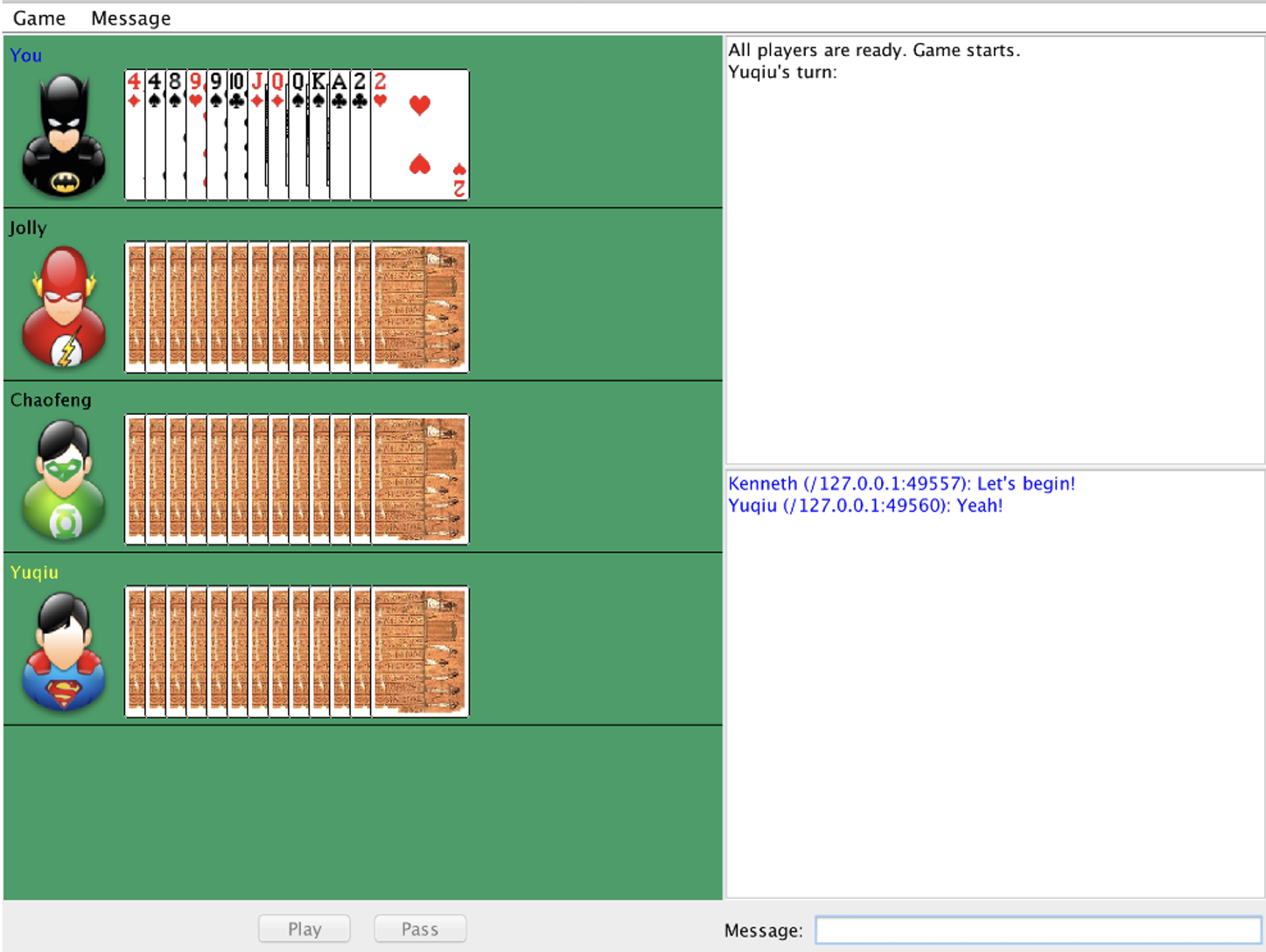Big Two card game
implementing networking and multi-threading capabilities in Java, enabling four players to play over the internet
Overview
This project focuses on enhancing the Big Two card game by implementing networking and multi-threading capabilities in Java, enabling four players to play over the internet. The provided classes and interfaces, including BigTwoServer, CardGameServer, CardGameMessage, GameMessage, and NetworkGame, will facilitate your implementation. You will develop a BigTwoClient class to model the client side of the game, manage game logic, and handle communication with the game server.
Game Description
Big Two is a popular card game where the goal is to be the first to play all your cards. Each player is dealt 13 cards, and the game is typically played with a standard deck of 52 cards. The player with the 3 of Diamonds starts the game, and players take turns playing hands of increasing value. The hands can be singles, pairs, triples, or various poker hands.

Getting Started
To get started with the game:
- Launch the Game: Run the
BigTwoClientclass. You will be prompted to enter your name. - Connect to Server: The client will establish a connection to the game server.
- Gameplay: Once all players are connected and ready, the game will start. Play your cards by selecting them and pressing “Play” or pass your turn by pressing “Pass”.
- Chat: Use the text input field to send messages to other players during the game.
Implementation Details
Server Behavior
- Connection Handling: The server manages connections, sends player lists, handles disconnections, and broadcasts messages such as JOIN, READY, START, MOVE, and MSG to clients.
- Game Start: When all players are ready, the server broadcasts a START message with a shuffled deck.
- Move Handling: The server broadcasts MOVE messages to clients when a player makes a move.
- Chat Messages: The server relays chat messages between clients.
Client Behavior
- Name Entry: Players enter their names at the start.
- Server Connection: The client connects to the game server using the provided IP and port.
- Game Logic: The client handles game logic, such as dealing cards, making moves, and checking moves.
- Chat Functionality: The client supports chat messages, which are displayed in the chat area.
- Game End: The client shows game results in a dialog box when the game ends.
Class Specifications
BigTwoClient
- Constructor: Initializes players, GUI, and server connection.
- Instance Variables: Includes player list, hands on the table, player ID, server details, socket, output stream, current index, and game table.
- Methods: Implements methods for game logic, handling server messages, making moves, and managing the connection.
Graphical User Interface (GUI)
- Chat Area: Displays chat messages.
- Text Input Field: Allows players to send chat messages.
- Connect Menu Item: Establishes a connection to the game server.
Conclusion
Enhancing the Big Two card game with networking and multi-threading allows for a more interactive and engaging multiplayer experience. By following the specifications and implementing the necessary classes and methods, you can successfully create a networked version of the Big Two game. Enjoy coding and have fun playing Big Two online with your friends!